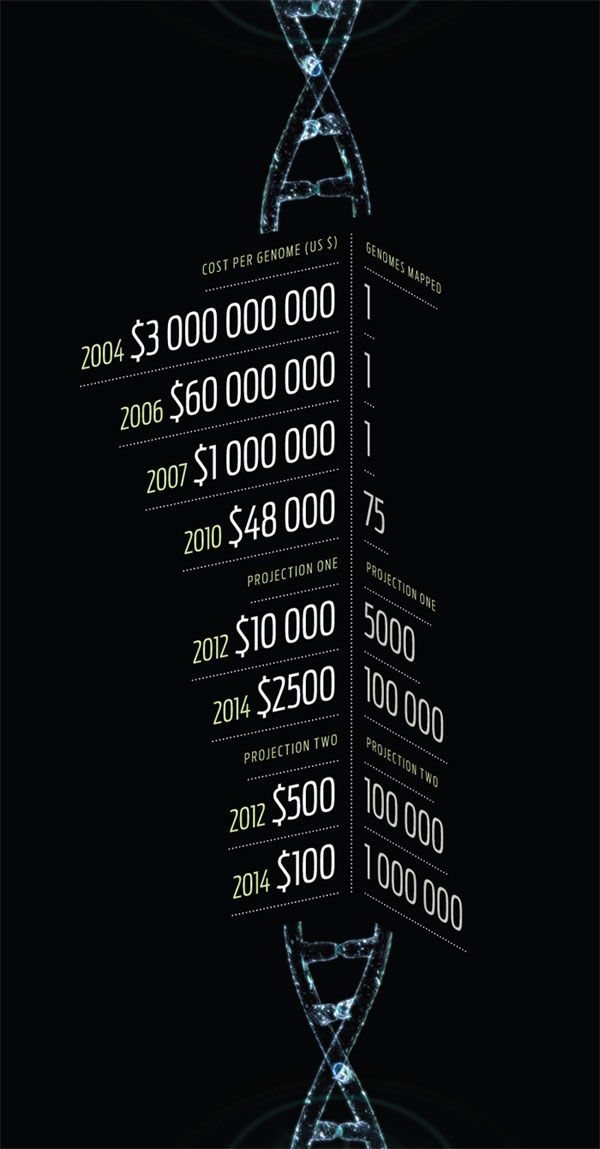Path to the Personal Genome
The next four years will be brought to you by the letters A, C, G, and T
In the space of a single decade, the cost of mapping all your DNA will fall from the billions of dollars to the thousands. The human genome is becoming a commodity virtually overnight. It’s as if millions of households could have had dishwashers and vacuum cleaners 10 years after James Watt built his steam engine.
DNA, the ”code of life,” is the ultimate binary file, a database of 12 billion bits. The data—6 billion matching sets of either the molecules adenine (A) and thymine (T) or guanine (G) and cytosine (C)—affect everything that makes you you: the color of your eyes, whether you’re moody or cheerful, and which diseases you’re most susceptible to.
Today you can purchase your very own personal genome for US $48 000 from Illumina, a San Diego biotech firm (and they’ll throw in an Apple iMac). [See ”The $100 Genome,” That’s a bit pricey if all you want to do is check out the genetic inheritance of Saturday’s dinner date. But by 2014, your genome will cost a mere $2500, according to TSG Partners, an Atlanta-based life sciences advisory firm, so low that health insurance companies might pick up the tab just to get their hands on the data. The current head of the Personal Genome Project, George Church, thinks it will soon be far cheaper than that—perhaps even less than the dinner itself.
Margo Anderson is the news manager at IEEE Spectrum. She has a bachelor’s degree in physics and a master’s degree in astrophysics.
